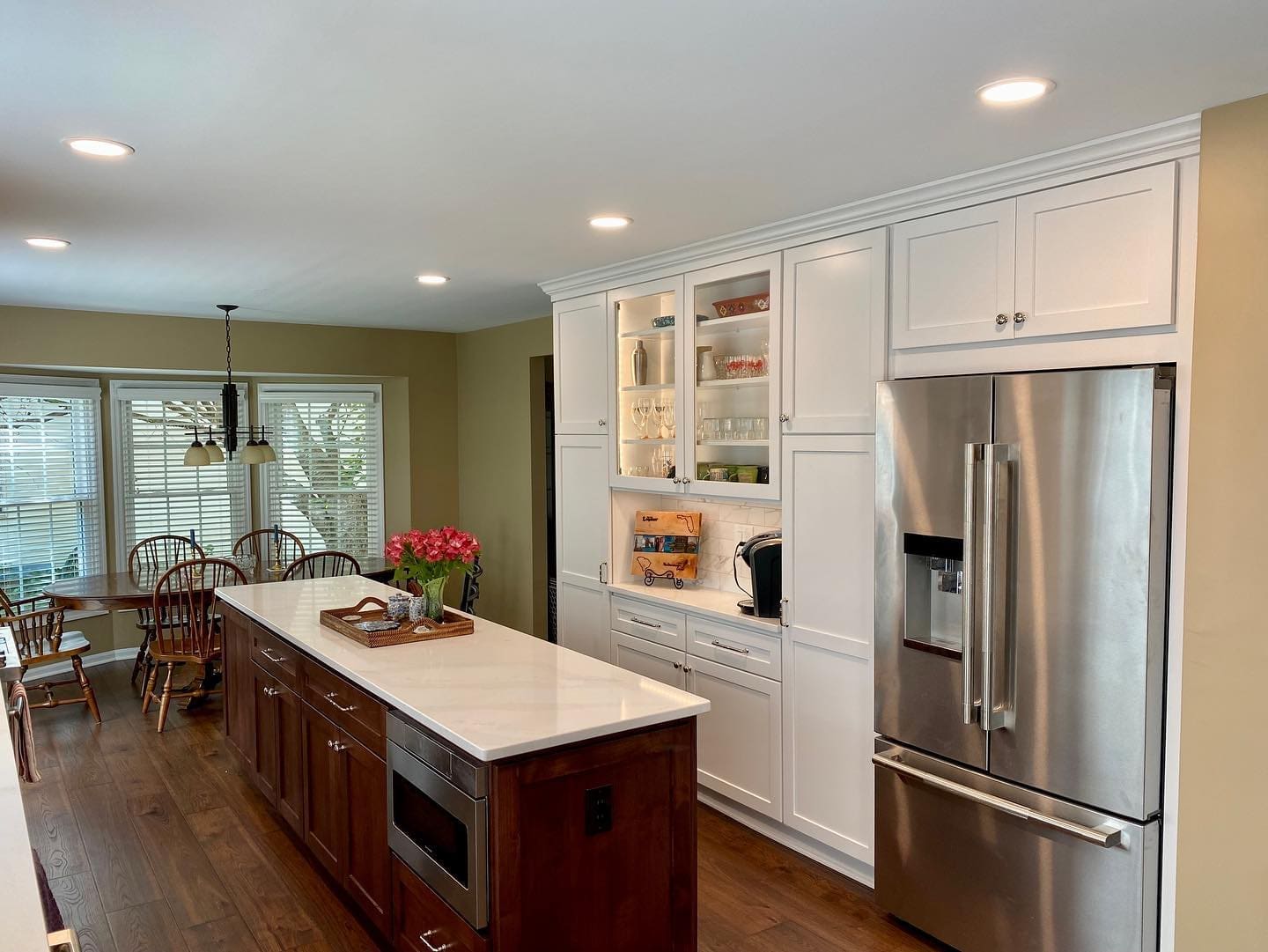Kitchen Lighting Choices
There’s probably no greater nuisance in an active kitchen than that of a shadowed area or dead spot in the lighting illumination of this space. It’s referred to as a nuisance because, although it’s quite preventable and often remediated via retro-fitting light fixture alternatives, most homeowners just tend to tolerate the poorly lit areas and do their work elsewhere in the kitchen. When embarking upon a kitchen makeover or, making a kitchen design from scratch, the lighting schematics (placement) and fixture type and style are extremely vital to the overall performance and appreciation of the finished kitchen. Not only does poor lighting defer the use of some valuable spaces within the kitchen but, as you might assume, can be a bit of a hazard as this is the room with the knives and fire! It’s therefore quite important to avoid downplaying the necessity of a solid lighting plan and, instead, make sure that there’s plenty of source and plenty of control for these sources.
Still popular in the modern kitchen these days, recessed or ‘can lights’ are a proven means to illuminate the entire, generalized kitchen space. These are very economical fixtures to purchase and install and are virtually unlimited in their potential placement and configuration. One of the greatest appeals of these types of fixtures in an operational model is that they are almost exclusively installed in ‘series’ and have some control or modulating switch accompanying the installation. In other words, a homeowner may select a row or course of a section of the recessed lights as well as having the ability to regulate the intensity of the illumination accordingly—as needs or desires fit. The drawback of these recessed lights is that they are ‘fixtures of function’ and serve as tools of general or pointed illumination but they don’t do a lot for the décor or decorating theme of the kitchen—and must be supplemented with other more attractive fixtures in order to translate a particular effect.
A relatively fresh trend in kitchen lighting is the modest use of LED (light emitting diodes) lighting in the kitchen area. Beyond its inherent reputation for being a more economical means of generating light, LED lighting registers an entirely proprietary effect on a kitchen space. LED lighting has a much softer ‘glow’ than candescent and incandescent bulb sources; and, quite typically, is introduced into a kitchen area in the genre of a colored lighting element. These fixtures are, by no means, used in general lighting areas but, instead, as a discreet lighting source in very confined and specific areas. They are commonly assigned, mounted underneath upper cabinets, to illuminate long stretches of countertop. They are also often found hiding behind the skirt of a tray ceiling, casting color and interest upon the details of the ceiling itself. Another usage for the LED fixtures is for the intentional and impressive highlighting of pertinent fixtures or features in the kitchen—taking the role of gallery lighting. As you might imagine, there are some limitations to their practical use in the kitchen; but no one could argue the creative and appealing nature of their inclusion in the modern kitchen.
Ornate lighting fixtures, for the most part, are quite passé in today’s kitchens. Pendant lights, as supplemental options for recessed fixtures, seem to be the decorating fixture of choice. Bronze, oil-rubbed bronze, and aged copper (the ‘warmer metals’) seem to be the most trending finish; and along with these types of metals, burnt-orange, aged ivory and stained glass globes are enhancing these fixtures in the warmest of trends this year in America’s kitchens.






